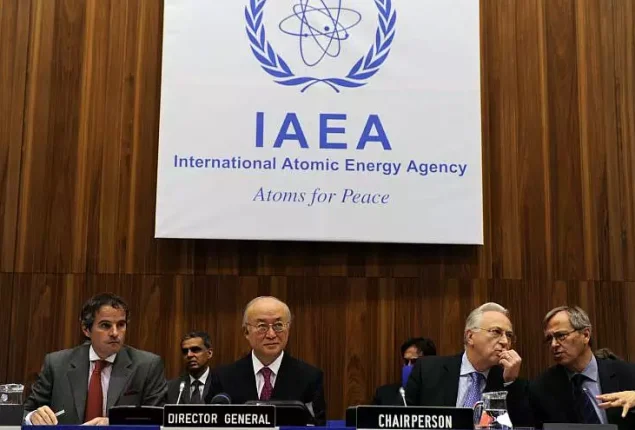67th IAEA session: Pakistan highlight its achievements in peaceful nuclear uses
ISLAMABAD: Chairman Pakistan Atomic Energy Commission (PAEC), Dr. Raja Ali Raza Anwar...

IAEA reports operational status of new North Korean nuclear reactor
The UN atomic agency has reported indications of the operational status of a second reactor at North Korea’s Yongbyon nuclear facility. Yongbyon serves as North Korea’s primary nuclear complex, housing its initial nuclear reactor with a capacity of five megawatts. This facility has been the known source of plutonium for North Korea’s weapons program.
The latest observation points to the functionality of a second reactor at Yongbyon, specifically a light-water reactor. The evidence comes from the observation of warm water discharged from the facility. The International Atomic Energy Agency (IAEA) made this statement in a release on Thursday.
“The discharge of warm water is indicative the reactor has reached criticality,” IAEA Director General Rafael Mariano Grossi said in a statement.
Experts describe ‘criticality’ in nuclear reactor operation as the stage where a self-sustaining nuclear chain reaction occurs. Unfortunately, since North Korea expelled inspectors in 2009, the International Atomic Energy Agency (IAEA) has been unable to access the country.
As a result, the agency has relied heavily on satellite imagery to monitor North Korea’s nuclear activities.
“Without access to the facility the Agency cannot confirm its operational status,” Grossi said.
He emphasized that the “construction and operation” of the light-water reactor (LWR) was against the United Nations Security Council resolutions and “deeply regrettable.”
“The LWR, like any nuclear reactor, can produce plutonium in its irradiated fuel, which can be separated during reprocessing, so this is a cause for concern,” Grossi said.
Plutonium, a key ingredient in nuclear weapons, is thought to be obtained by processing spent fuel rods generated during the operation of Yongbyon’s initial nuclear reactor.
According to Kim Dong-jin, a researcher at the Korea Atomic Energy Research Institute, the release of warm water is a clear sign that a reactor is active.
“Warm water discharge is a common occurrence in operating light water reactors,” Kim said.
“During the operation of a power plant, it is necessary to circulate cooling water. As a result, the water is heated.”
According to South Korea’s Yonhap news agency, the IAEA statement indicates the operation of a ‘larger light-water reactor’ at Yongbyon.
North Korea conducted its first nuclear test in 2006 and conducted its sixth and most powerful test in September 2017.
In March of this year, Kim Jong-un called for an increase in the production of ‘weapon-grade nuclear materials,’ unveiling what seemed to be a new, smaller tactical nuclear warhead. On Monday, the country launched its solid-fuel Hwasong-18 intercontinental ballistic missile, the largest weapon in its arsenal. Kim also issued a warning on Thursday through state media, stating that Pyongyang would not hesitate to launch a nuclear attack if provoked with nuclear weapons.
Catch all the International News, Breaking News Event and Latest News Updates on The BOL News
Download The BOL News App to get the Daily News Update & Follow us on Google News.